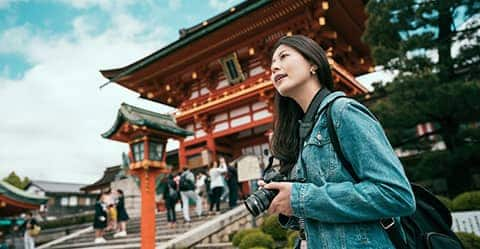- Culture
- Wakayama
Kumano Hongu Taisha Shrine and Oyunohara

Kumano Hongu Taisha, the sacred shrine of rebirth
Part of the World Heritage site of the Kumano Kodo pilgrimage route, Kumano Hongu Taisha Shrine is the center of Kumano Sanzan, or the three grand shrines of Kumano. Enveloped in an archaic atmosphere, the shrine is the first stop when walking on Kumano Kodo's Nakahechi route. The land of Kumano is rich in nature surrounded by mountains, forests and streams and has been believed to be a haven where Buddha resides in the olden days. As such, there was widespread belief that the pilgrimage to Kumano would grant the worshipper rebirth. Nearby is Oyunohara where the shrine was previously located, exhibiting a regal setting of a giant torii gate standing in a sandbar on the Kumano River.
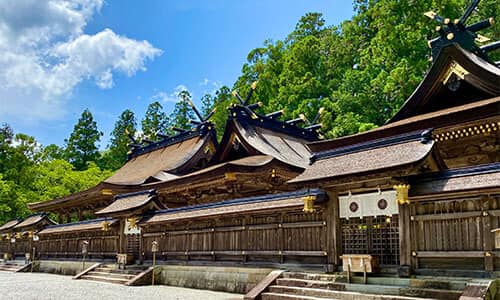
Shrine enveloped in a regal air
Kumano Hongu Taisha is one of the head shrines of all Kumano Shrines across the country. The 158 stone steps leading to the main hall are lined on both sides with Kumano Daigongen banners, and the surrounding thick cedars evoke the shrine's history. Step through the main gate as the magnificent main hall with beautiful cypress thatched roof comes into view. Visit the five shrine buildings in order, and sense the calming and clearing of your mind and heart.
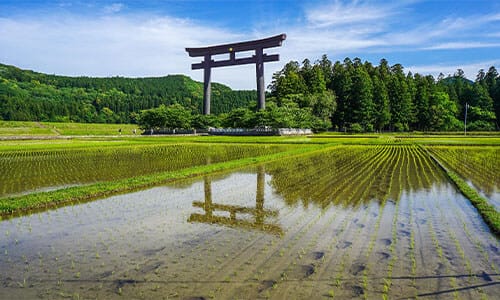
Japan's largest torii gate towers majestically in Oyunohara.
Oyunohara was the former location of Kumano Hongu Taisha. At the time, the grounds were several times larger than the current scale with five complexes of 12 shrine buildings, a two-story Romon gate, Kagura-den dance stage, Noh theater stage and other facilities. A great flood in 1889 swept away many of the buildings, but four buildings which survived the disaster were relocated and enshrined in the current Kumano Hongu Taisha location. Today, as if to protect the land, Japan's largest torii gate standing 34 meters tall and 42 meters wide towers over the thick forests of Oyunohara, a magnificent sight which can be seen from a great distance away.
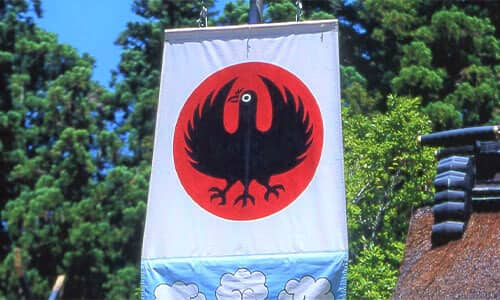
Yatagarasu crow, the messenger of the gods
Yatagarasu is the mythical three-legged crow known as the messenger of the gods, and its symbol can be found in various places around Kumano Hongu Taisha. In Japanese mythology, the crow is said to have guided Emperor Jimmu from Kumano to Nara, and has been regarded as the common guiding god for the Kumano Sanzan shrines. On the Kumano-go'o-shinpu, a unique amulet offered at the Kumano Sanzan shrines, letters are designed using 88 crows. Yatagarasu is also famous as the symbol of the Japan Football Association.
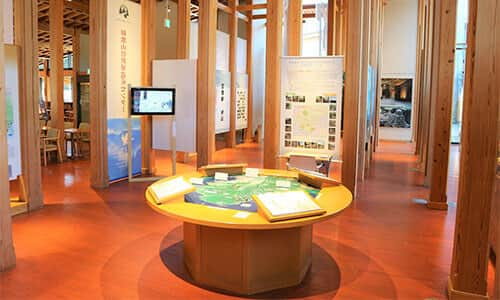
Kumano Hongu Heritage Center
Built using locally sourced lumber, the wooden, one-story building of the Kumano Hongu Heritage Center is located right in front of Kumano Hongu Taisha. The center houses the offices of the Kumano Hongu Tourist Association, the base for various tourism information, and the Wakayama World Heritage Center, which serves to maintain and utilize the World Heritage site. There are also exhibitions introducing the history of the shrine and the worship and pilgrimage of Kumano, as well as an area where visitors can learn about the World Heritage site of the Sacred Sites and Pilgrimage Routes in the Kii Mountain Range. The warm interior built from local Kishu lumber is designed to express the beautiful natural view of Koya and Kumano, as if standing among the sunbeams filtering through the cedar forest of the Kii Mountain Range.
Location
| Name | Kumano Hongu Taisha Shrine and Oyunohara |
|---|---|
| Website | https://en.visitwakayama.jp/venues/venue_18/ |
| Address | 1110 Hongu, Hongu-cho, Tanabe-shi, Wakayama |
| Access | Approximately 75 minutes from the Nanki-Tanabe IC on the Hanwa Expressway/Kisei Expressway Approximately 60 minutes' bus ride from JR Shingu Station |
| Inquiries | TEL: 0735-42-0735 (Kumano Hongu Tourist Association) |





